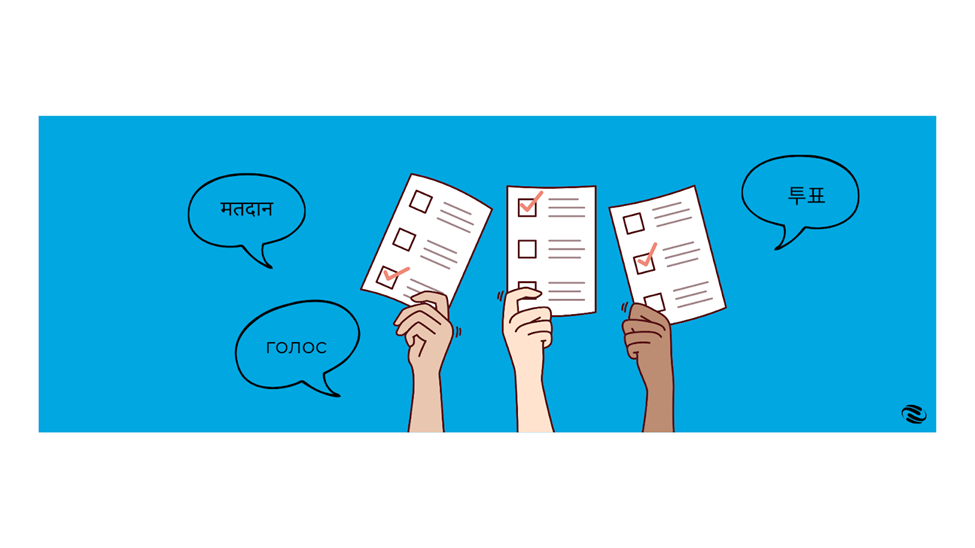The Translation Process for Voting Materials
The translation process for voting materials must be carefully managed to ensure accuracy and cultural appropriateness. This process typically involves several steps, including:- • Identifying the target audience: The first step is to identify the specific group of voters who will be using the translated materials. This will help to ensure that the translation is tailored to their needs and understanding.
- • Selecting qualified translators: Once the target audience has been identified, qualified translators must be selected. These translators should have a deep understanding of both the source language and the target language, as well as a strong knowledge of the cultural context of both languages.
- • Reviewing and editing the translation: The translated materials must be carefully reviewed and edited by both translators and members of the target language community. This will help to ensure that the translation is accurate, culturally appropriate, and easy to understand.
- • Quality assurance: Finally, the translated materials must undergo a quality assurance process to ensure that they meet all of the necessary standards. This may involve having the materials reviewed by independent experts or using specialized translation software.
The Importance of Cultural Context
Cultural context is essential for accurate translation, regardless of the language involved. Words often carry multiple meanings depending on the context in which they are used. For example, the English word "table" can refer to a piece of furniture, a chart, or a discussion. Translators must be deeply familiar with the culture and society associated with the language to accurately convey these meanings in the translated text.Furthermore, cultural nuances can influence the way information is conveyed. For example, some cultures may prioritize indirect communication, while others may prefer direct communication. Translators must be aware of these cultural differences to ensure that the translated text is culturally appropriate and understandable.
The Unique Challenges of Translating Oral Languages
Translating spoken languages, from widely used ones to those of indigenous communities, presents a complex set of hurdles. A recent Votebeat article ("Navajo Indigenous Oral Language Translation, Voting Rights Act 203") exemplifies this perfectly. The article highlights the struggle Navajo speakers faced in translating "fentanyl," a concept lacking a direct equivalent in their language, demonstrating the intricate cultural nuances and connotations embedded within words.One of the primary challenges lies in the very nature of these languages: the lack of a standardized written form. Many spoken languages, like Navajo, haven't developed a single, universally accepted written system. This presents a significant obstacle for translators seeking to ensure consistency and accuracy across translations. Furthermore, cultural nuances can influence the way information is conveyed. For example, some cultures may prioritize indirect communication, while others may prefer direct communication. Translators must be aware of these cultural differences to ensure that the translated text is culturally appropriate and understandable.
Addressing Past Criticisms of Translation Quality
In recent years, there have been criticisms of the quality of translation in voting materials, particularly for indigenous languages. These criticisms have raised concerns about the fairness and accessibility of elections for voters who rely on translated materials.In response to these criticisms, it is essential to take steps to improve the quality of translation in voting materials. This includes:
- • Providing adequate funding for translation services: Adequate funding is essential for ensuring that qualified translators can be hired and that the translation process can be properly managed.
- • Developing standardized translation guidelines: Standardized guidelines can help to ensure consistency and accuracy in translation.
- • Encouraging collaboration between translators and indigenous communities: Collaboration between translators and indigenous communities can help to ensure that the translation process is culturally appropriate and that the needs of voters are being met.
By taking these steps, it is possible to improve the quality of translation in voting materials and ensure that all voters have access to accurate and understandable information.
Citations:
○ Votebeat. "Navajo Indigenous Oral Language Translation, Voting Rights Act 203." Votebeat. Arizona, 2024.
https://www.votebeat.org/arizona/2024/09/17/navajo-indigenous-oral-language-translation-voting-rights-act-203/".
○ National Institute of Standards and Technology (NIST). NIST Special Publication 800-187: Guide to Information Security Program Management. NIST, 2012.
https://nvlpubs.nist.gov/nistpubs/legacy/sp/nistspecialpublication800-100.pdf
○ UNESCO. Global Action Plan of the International Decade of Indigenous Languages (IDIL2022-2032). UNESCO, 2022.
https://unesdoc.unesco.org/ark:/48223/pf0000383844?posInSet=3&queryId=1248d3ba-8307-4c9a-b9a2-45208a22817d.
○ American Translators Association (ATA). ATA Code of Ethics and Professional Responsibility. ATA, 2023.
https://www.atanet.org/wp-content/uploads/2023/05/ATA-Approved-Code-of-Ethics_220208-.pdf.



 RSS Feed
RSS Feed